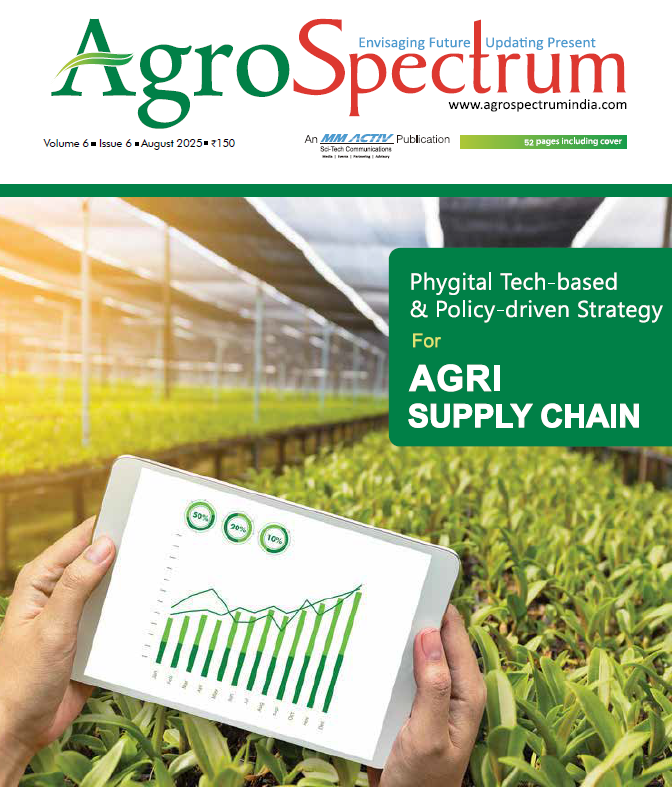Wednesday, 12 November 2025

Agricultural supply chains and global trade flows have grown substantially, driven by technological progress, trade liberalisation, and rising global demand. Major producing and importing countries dominate these flows, with commodity crops and high-value products such as fruits and nuts leading this growth. However, geopolitical tensions, protectionist policies, and supply chain disruptions pose significant challenges to stability and market access, particularly for developing countries. Innovations in digital trade facilitation and proactive policies for smallholders offer pathways to enhance sustainability and resilience in global agricultural trade. This dynamic landscape requires ongoing policy attention to balance trade liberalisation, sustainability goals, and social inclusion to ensure global food security and economic development. Let’s dig deeper.
The European Union (EU) is India’s largest trading partner, accounting for €124 billion in goods trade and nearly €60 billion in services trade in 2023. Trade has grown by about 90 per cent in the last decade. Despite growth, EU-India Free Trade Agreement (FTA) negotiations have stalled mainly due to disagreement on agriculture and regulatory issues, despite strong trade volumes and growth. Higher import duties mean increased import costs for Indian businesses, resulting in higher freight, customs, and warehousing expenses. This leads to reduced import volumes and potentially decreased demand for logistics services. Investing in and upgrading infrastructure, including cold storage, warehousing, and transportation networks, is crucial to reduce post-harvest losses, enhance efficiency, and meet international quality standards, improving overall logistics performance. Adopting technological solutions like IoT, AI, and digital platforms could enhance supply chain transparency, improve tracking, optimise routes, and reduce wastage, ultimately boosting efficiency and competitiveness.
India is balancing trade liberalisation pressures with the protection of domestic agriculture, aiming to enhance productivity and market access while managing import surges and negotiating tariffs.
As international partners amend tariffs or introduce non-tariff barriers, India must proactively engage in bilateral and multilateral platforms to ensure the interests of its agricultural exporters are safeguarded. Ongoing negotiations, such as the EU-India Free Trade Agreement, should aim to harmonise standards rather than dilute domestic priorities. A cooperative approach, focusing on aligning quality expectations and easing documentation protocols, can unlock significant market access without compromising local livelihoods.
The government must, at the same time, invest in strengthening the physical and digital logistics backbone of the agricultural export ecosystem. Incentivising the development of scientific warehousing facilities, cold storage units near farm clusters, and multimodal connectivity infrastructure, which can reduce post-harvest losses and cut lead times. Public-private partnerships (PPPs) can also help accelerate this development, particularly in underserved regions with high agricultural potential.
Recent policy measures, including digital trade facilitation platforms and customs duty exemptions on select goods, are streamlining international trade processes and reducing clearance times for agri products. This leads to improved efficiency in logistics operations and lowers overhead costs, making Indian agriculture more competitive globally.
Introduction of new tariffs or non-tariff barriers can complicate supply chains, resulting in increased compliance costs, shipping delays, and reduced operational predictability. Conversely, liberalization—such as simplifying export procedures or reducing duties—can boost volumes and attract logistical investments.
Policy reversals (such as sudden bans or tariff hikes) impact export volumes and reliability. The unpredictability of such changes discourages long-term investment in infrastructure, warehousing, and technology for agri logistics.
High import tariffs on Indian agricultural goods (e.g., shrimp, rice) by countries like the US threaten the viability of established supply chains, potentially forcing Indian logistic operators to seek new export destinations and routes.
Reciprocal tariffs (US-India) could hinder the movement of select products, raising logistical costs and compliance workloads for agri exporters. Non-tariff barriers, such as new sanitary or licensing standards, often have an equal or greater disruptive impact, especially for perishable agricultural goods which require quick, efficient logistics.
To read more, click: https://agrospectrumindia.com/e-magazine